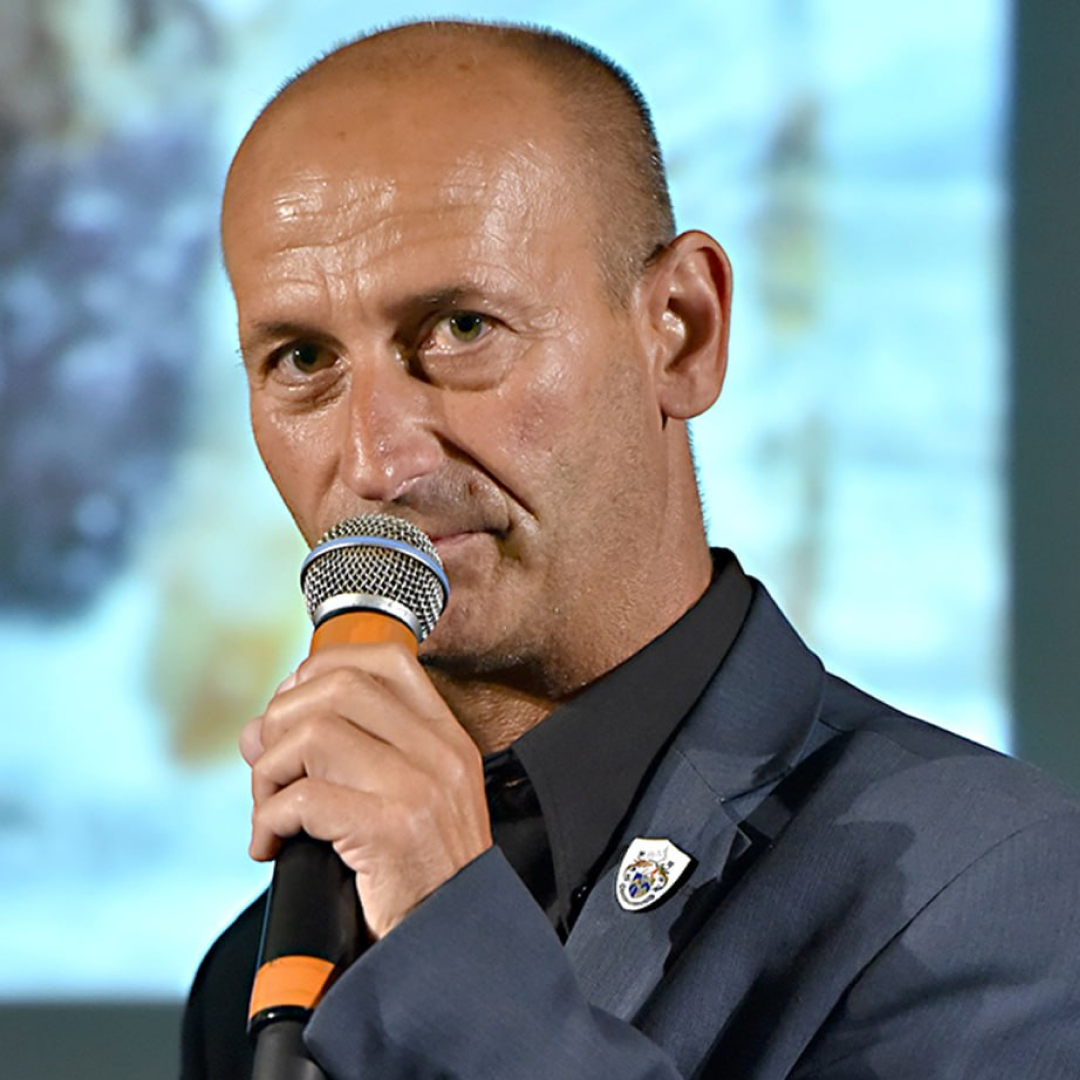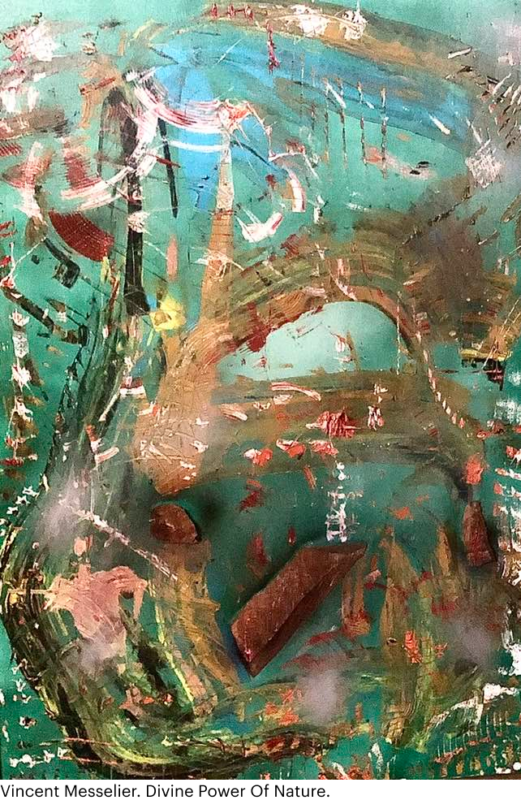Belgian artist Vincent Messelier creates abstract paintings in his own style, which he calls meridianism. Fine Art Shippers spoke with him about the meridians of life, building an artist community, and his love for music.
Artist Talk: Vincent Messelier on Meridianism and Sharing Positivity
Let's talk about your artist journey first. Until 2006, you were in the business world. What inspired you to pick up the brush and start your first painting?
Vincent Messelier: I am self-taught and don't have any formal art education. In 2006, I was going through a divorce. It was a challenging time in my life, and I was looking for a change. At some point, I just bought a canvas, acrylic paint, and palette knives, and began painting. "I didn't even know the difference between gouache, oil paint, and acrylic. Looking back, my first artwork seems quite raw, but I genuinely enjoyed the process. I believe my artistic inclination comes from my mother, who had artistic potential but never had the opportunity to pursue it. Tragically, she passed away in a car accident when I was 19—and she was only 45.
You come from Belgium. Are there elements of Belgian culture that subtly find their way into your art?
Not really. I was never influenced by any specific artist or movement. I simply pursued what felt right for me. Through experimentation, I developed my own style, "meridianism." My paintings always contain horizontal and vertical stripes reminiscent of the world's meridians. To me, it’s not only a formal approach but also a way to convey the interconnectedness of all living beings. All my works have titles to give people insight into my thoughts. However, viewers can also perceive different meanings in my passion, and that's perfectly okay. There's always room for discussion. This is also my artistic statement.
The bond between an artist and the viewer is profound and wordless, as art is a reflection of the creator's heart and life journey. When you acquire my work, you connect to my emotions, struggles, and joys. Art, for me, is about deep connections and shared feelings. It's an expression straight from my soul, and, to me, it's as natural as a second skin.
I know you love jazz music and often listen to it while working. How does it influence the rhythm, texture, and choice of colors, if at all?
True, jazz music puts me in a creative state, but it can be another genre depending on the mood of the moment. I get a glass of good wine, turn on Jimmy Smith, and just start painting. I love the sound of his Hammond organ, perhaps because I had a Hammond myself. I never sketch; I let the canvas guide me. After five to seven hours, the piece comes together organically, usually in one sitting.
You incorporate materials like wood and foam into your acrylic paintings. What do you aim to achieve with that, and what kind of effect do they provide?
I once used leftover materials from a sculptor friend in my work. Before, I would sometimes add wood to my paintings; nowadays, I mostly paint on wooden panels, like MDF, instead of canvas. The choice between wood and canvas isn't just about preference—it's about inspiration. Whether it's wood or canvas, it's all about capturing the feeling of that moment.
Can you tell us about your Art Home Gallery? What does the “home” part mean?
I want to support fellow artists by giving them exposure and the opportunity to foster new connections. My gallery is a place for artists and musicians to come together. It's an open space where everyone is welcome. Over the past three years, things were quiet due to the pandemic and other crises. Now, we're bouncing back. I am currently collaborating with five artists for an upcoming exhibition, some of whom are from Lithuania. We plan to host an exhibition every three months, featuring new international artists each time.
Can you share some new projects you are especially excited about?
We are launching the Global Culture Network (GSN), a web television platform dedicated to showcasing artists, actors, musicians, and art lovers from around the world. We want to highlight the positive and uplifting side of culture by letting individuals share their stories and achievements. The interviews will be conducted in both French and English. These sessions will be recorded in various locations, including my gallery. While our primary focus is on artists, we're also open to featuring chefs with unique recipes, architects with noteworthy projects, and other creatives with positive stories to tell. Our motto is: 'We may not be able to change the world, but we can make it better through our shared passions.” I invite everyone to join.


